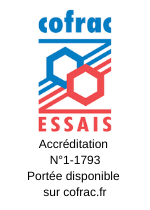
• Why do you need to subject your medical device to an ISO 10993-18 chemical characterization before putting it on the market?
In order to test the biocompatibility of your medical device, qualitative and quantitative data must be collected on the materials that make up the devices in the context of biological safety. In the absence of such information, the material should be tested using appropriate techniques to collect data on its composition and its potential extractibles.
• What results can you expect from this analytical chemical characterization?
The objective of this analytical expertise will be to identify and quantify the soluble and insoluble elements that will potentially be released from the Medical Device.







